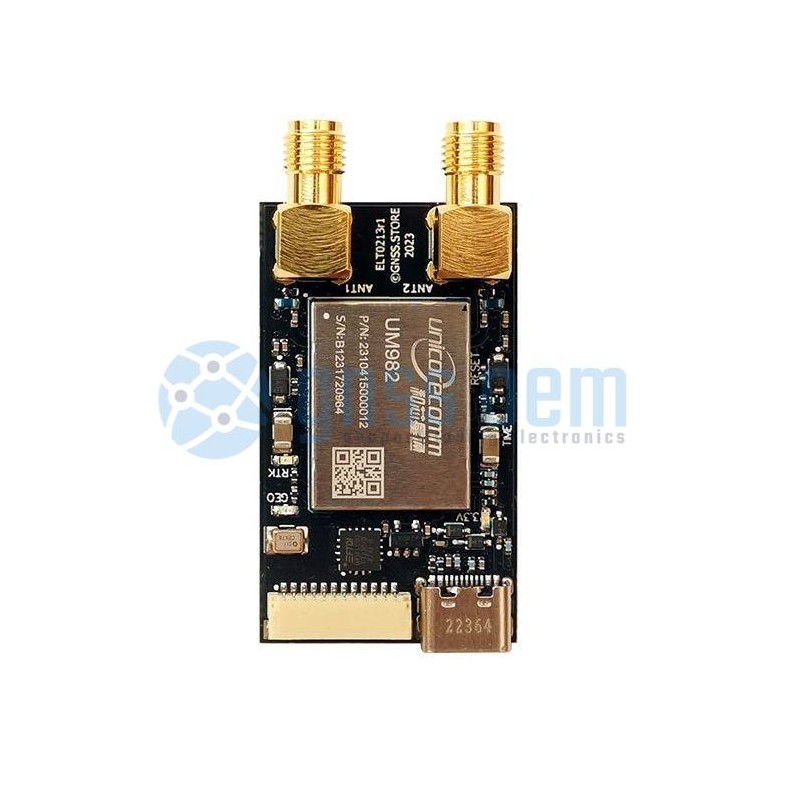Review for "UM982 Dual Channel RTK GNSS receiver board with USB C and JST"
UM982 Dual Channel RTK GNSS receiver board with USB C and JST connectors. I2C, UART, SPI interfaces. Base, Rover or Heading operation. VOLUME SALES PRICING This product comes with 1 years worldwide warranty
Review





Hi Team
I'm enquiring about which product would be most suitable for my problem. I'm working on a university project to automate a stationary telescope by using a GNSS module to provide accurate heading and pitch data. We aim to achieve an accuracy of at least 0.5 degrees in each direction (heading and pitch).
We have a publicly available RTK base station within 200 meters of our installation site if RTK technology is necessary to provide accurate heading information, or we could consider setting up our own.
I am looking at the UM982 modules, specifically reference number ELT0213. Dual antenna systems seem to provide accurate stationary heading information. Does this device still require RTK to obtain accurate heading information? If so will 200 meters away from the base station be able to provide good accuracy?
What solution would you suggest?

